Sharks, with their powerful jaws and razor-sharp teeth, have long captivated and instilled fear in humans. While not all shark species are considered a threat to humans, there are certain species that pose a significant risk, especially in areas where they frequent human-populated coastal and ocean environments. Here is a comprehensive overview of the top 10 most dangerous sharks in the world, based on historical attack data, biological characteristics, and potential for inflicting harm on humans:
Great White Shark (Carcharodon carcharias)
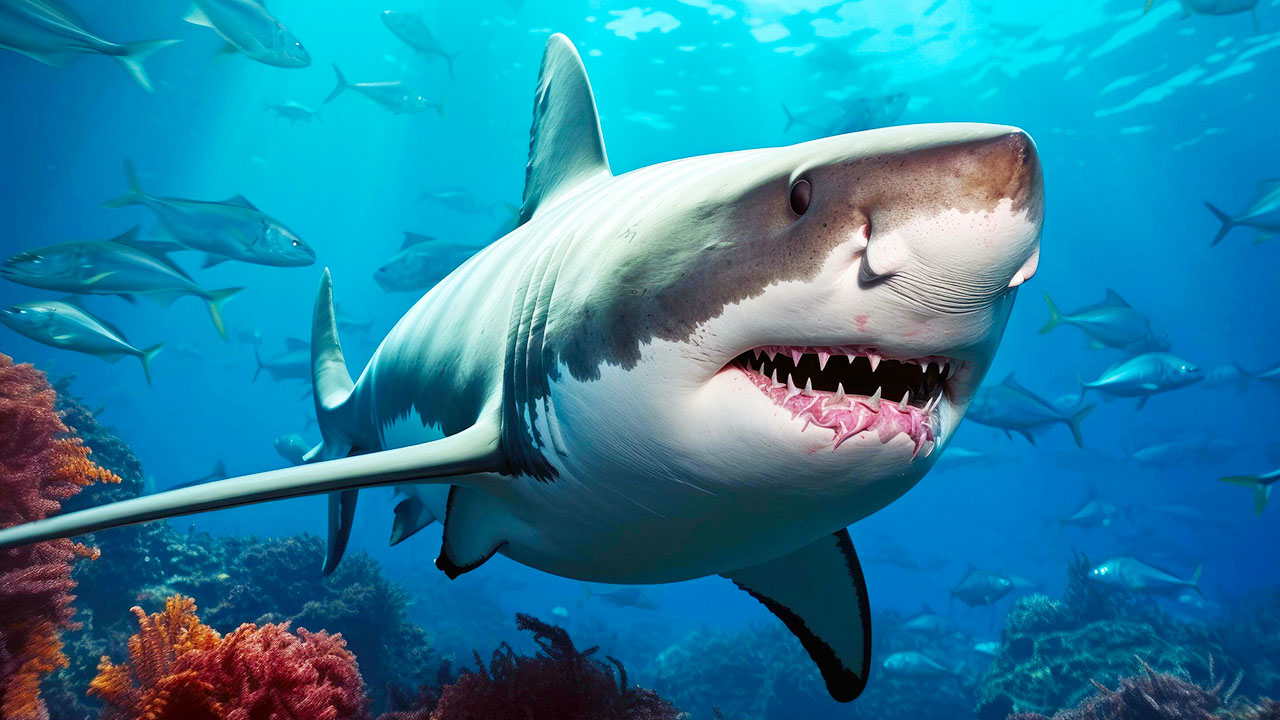
The Great White Shark, often considered the apex predator of the ocean, is renowned for its size, strength, and hunting prowess. With an average length of 11 to 15 feet and a weight of up to 5,000 pounds, the Great White’s massive jaws are equipped with up to 300 serrated teeth that can deliver a powerful bite force of over 4,000 pounds per square inch. This formidable predator is an opportunistic feeder that hunts various marine mammals, fish, and even other sharks.
Size and Strength
Great White Sharks are the largest predatory fish on Earth. Their massive size and muscular bodies enable them to exert tremendous strength when attacking prey. They have been known to jump completely out of the water (a behavior known as breaching) when attacking prey from below. Their teeth are triangular, serrated, and up to three inches long. This allows them to saw through flesh, bone, and even metal with frightening ease.
Hunting Behavior
Great Whites are ambush predators that rely on stealth and the element of surprise when attacking prey. They tend to hunt in shallow coastal waters and often approach unsuspecting prey from below. Their hunting strategies include ramming victims at high speeds, delivering a massive, stunning blow with their snout. They also breach the water to capture prey at the surface. When food is scarce, Great Whites will become more aggressive and less cautious when approaching prey or investigating potential food sources.
Great White attacks on humans, while relatively rare, can be highly dangerous due to the shark’s large size, strength, and predatory behaviour.
Bull Shark (Carcharhinus leucas)
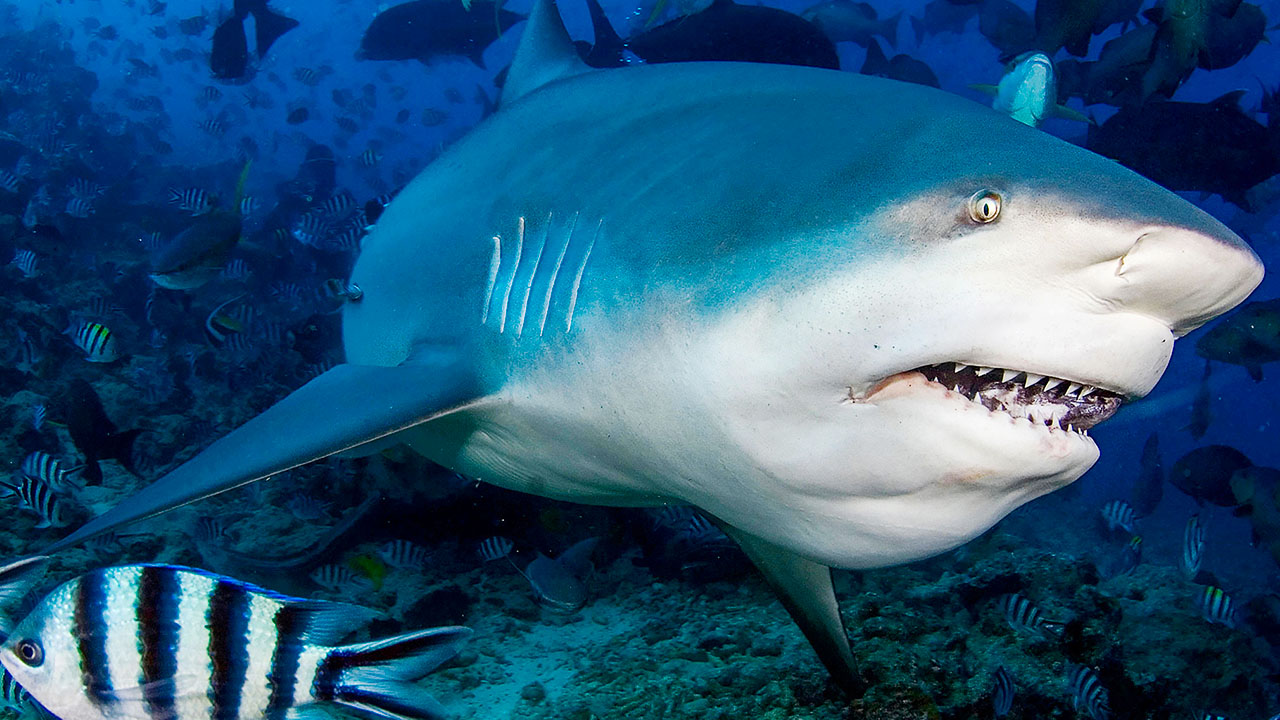
Bull Sharks are notorious for their aggressive nature, making them one of the most dangerous sharks in the world. They are found in warm, shallow waters, including estuaries, rivers, and coastal areas, often venturing further inland than other shark species. Bull Sharks are known for their powerful jaws and sharp teeth, and they are considered highly unpredictable and aggressive when provoked or threatened. Their attacks on humans can be particularly severe due to their strength and the fact that they often occur in shallow waters close to human activities.
Habitat
Bull Sharks have a high tolerance for fresh water and can thrive in both saltwater and freshwater habitats. They are frequently found in shallow bays, estuaries, and rivers, and have been known to swim miles upstream into freshwater lakes and rivers. Their ability to inhabit freshwater allows them to range much farther inland than other shark species and potentially encounter humans in unexpected areas.
Aggressive Tendencies
Bull Sharks tend to be highly territorial and aggressive, with divers and swimmers reporting unprovoked attacks even when unintentional provocation has been avoided. They are quick to anger when intruded upon or threatened. Their aggression is fueled by their extremely high levels of testosterone in comparison to other shark species. Many experts consider Bull Sharks to be the most dangerous shark to humans due to their predilection towards shallower waters and their highly aggressive tendencies.
Tiger Shark (Galeocerdo cuvier)
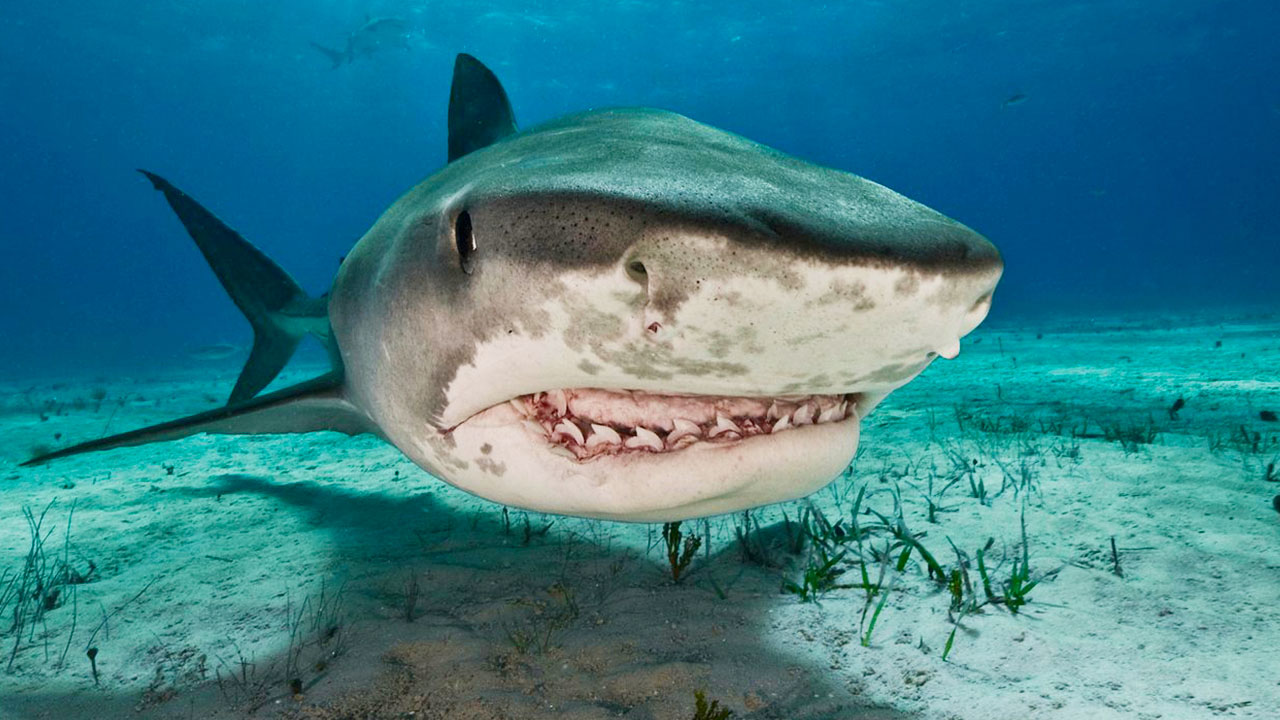
Tiger Sharks are solitary predators with a fearsome reputation. They are named for their dark vertical stripes, which resemble a tiger’s pattern. Tiger Sharks are found in tropical and subtropical waters around the world and are known for their opportunistic feeding habits, consuming a wide range of marine animals, including fish, sea turtles, seals, and even other sharks.
Diet
True to their name, Tiger Sharks possess the trait of ultimate opportunism when it comes to their diet. They will eat just about anything they come across, including fish, seals, birds, smaller sharks, squid, turtles, dolphins, and even garbage and debris. Their unique digestive system allows them to digest even sea turtle shells and dolphin bones. Tiger Shark stomach contents have also revealed license plates, suits of armor, and other odd indigestible items.
Stealth Hunting
Despite their large size, Tiger Sharks are skilled stealth hunters, often approaching prey with great caution before attacking. They tend to hunt at night in shallow reef environments, utilizing the low light conditions and element of surprise to ambush prey. Tiger Sharks have lightning quick reflexes that allow them to seize passing prey with extremely accurate timing and precision.
Tiger Sharks are considered potentially dangerous to humans due to their large size, powerful jaws, and aggressive nature. They have been known to attack humans, particularly in areas where they are accustomed to encountering food sources such as fishing boats or divers.
Oceanic Whitetip Shark (Carcharhinus longimanus)
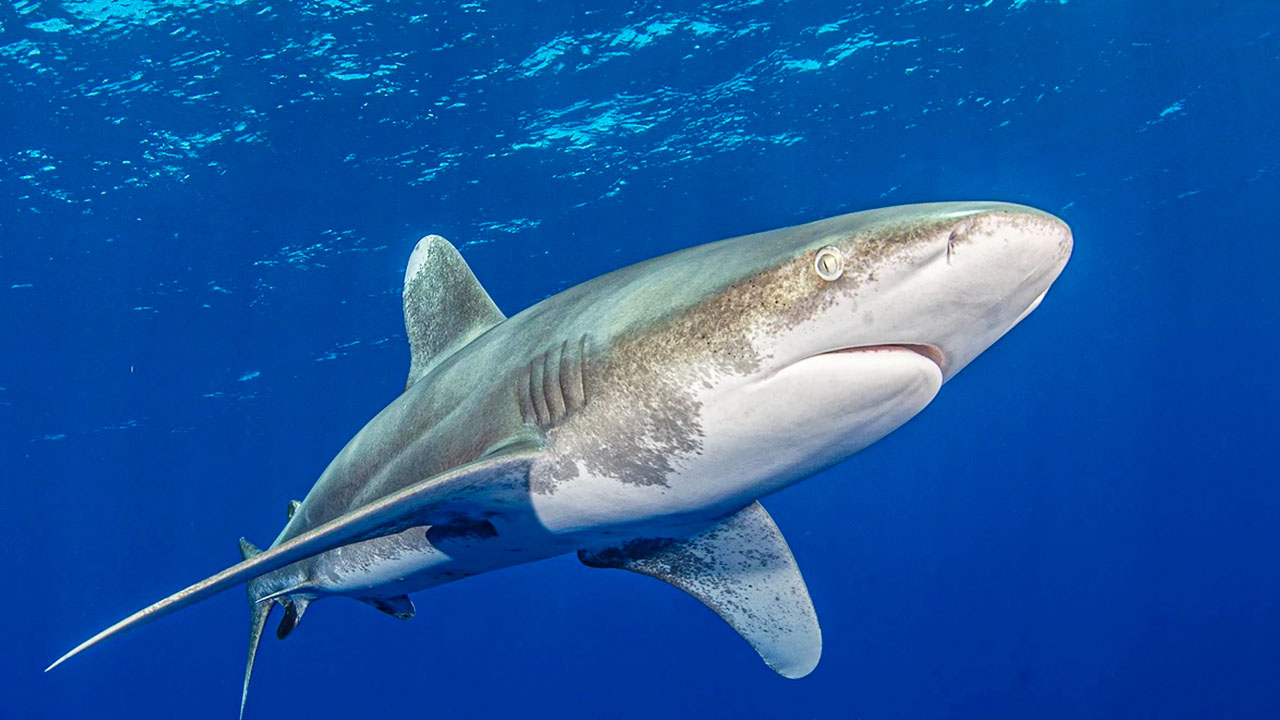
Oceanic Whitetip Sharks are large, pelagic sharks found in warm, tropical oceans around the world. They are characterized by their long, pointed fins and distinctive white tips. Oceanic Whitetip Sharks are often associated with tuna and other large marine animals and have been known to follow fishing vessels, scavenging for scraps and bait. While Oceanic Whitetip Sharks are not typically aggressive towards humans, they can be dangerous if they feel threatened or provoked, and they have been responsible for several attacks on fishermen and divers.
Association with Longline Fishing Operations
Oceanic Whitetip Sharks famously followed sailing ships for months on end back when long voyages were common. Today, they associate closely with longline fishing boats and often remain with fishing vessels for extended periods of time. They are so strongly attracted to fishing activity that nearly the entire global population is estimated to spend a portion of time interacting with longline fishing gear. This association exposes them to fishing lines and baited hooks.
Opportunistic Scavenging
The Oceanic Whitetip’s tendency to scavenge makes them potentially dangerous to humans involved in fishing activities. They are constantly on the lookout for an easy meal and will readily consume almost anything edible they come across. Their powerful jaws and teeth allow them to devour large prey and their boldness often brings them extremely close to fishing boats, docks, and aquaculture operations. Caution should be exercised when fishing or diving around these opportunistic predators.
Shortfin Mako Shark (Isurus oxyrinchus)
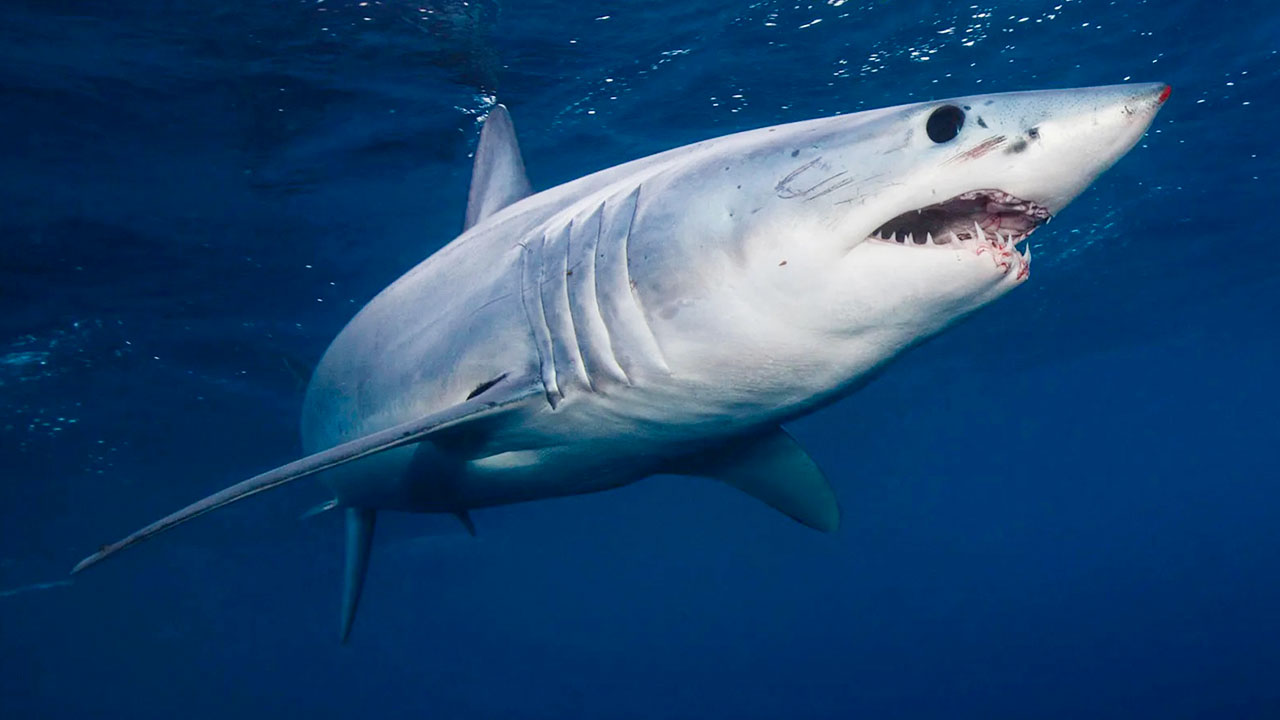
The Shortfin Mako Shark is one of the fastest sharks in the world, capable of reaching speeds of up to 60 miles per hour. With an elongated, streamlined body and powerful jaws, the Shortfin Mako is a formidable predator known for hunting large fish, sea turtles, and marine mammals. Shortfin Mako Sharks are generally not aggressive towards humans but can be provoked if they are accidentally hooked or feel threatened. Their attacks on humans, while rare, can be severe due to their speed, agility, and powerful jaws.
Lightning Fast Speed
The Shortfin Mako’s physique is specifically adapted for achieving remarkable speeds. They have a specialized circulatory system that keeps their muscles warm, increasing blood flow and maintaining maximum muscle contraction. Their long, slender shape reduces drag and turbulence. Researchers have clocked Shortfin Makos swimming over 40 miles per hour in short bursts. No other shark can rival the Shortfin Mako for pure speed.
Jumping Behavior
Shortfin Makos are known for their dramatic leaps and acrobatic breaching behaviors. They often launch their entire body out of the water when pursuing agile prey like tuna or billfish. When hooked on a fishing line, Shortfin Makos frequently leap multiple times in succession in an attempt to throw the hook. This jumping behavior brings them within dangerous proximity to boats and fishermen, since they can unexpectedly breach directly onto watercraft.
Bronze Whaler Shark (Carcharhinus brachyurus)

Bronze Whaler Sharks are found in coastal waters around the world and are known for their robust, powerful build and bronze-brown coloration. They are opportunistic predators that hunt various fish, seabirds, and marine mammals, sometimes forming large aggregations to feed. Though Bronze Whaler Sharks do not actively hunt humans, they are considered potentially dangerous due to their size, strength, abundance, and proximity to human swimming areas and spearfishing activities.
Coastal Habitat
Bronze Whaler Sharks prefer shallow, inshore habitats and are extremely common along coastlines and in harbors, bays, and river mouths. Their affinity for coastal waters brings them near beaches, piers, and jetties used for swimming, fishing, and other recreational activities. Encounters with humans are frequent, though mostly incidental as the sharks pursue normal prey. Caution should be exercised in Bronze Whaler territory.
Group Hunting
Bronze Whaler Sharks will cooperate to herd and concentrate schools of fish into tightly packed balls, known as bait balls, making the fish easier to consume. The sharks will take turns attacking the ball, rushing through the boiling mass of fish to capture prey in their jaws. This frantic feeding behavior can be dangerous to nearby humans, who risk being struck by the large, powerful sharks during their cooperative hunting.
Blue Shark (Prionace glauca)
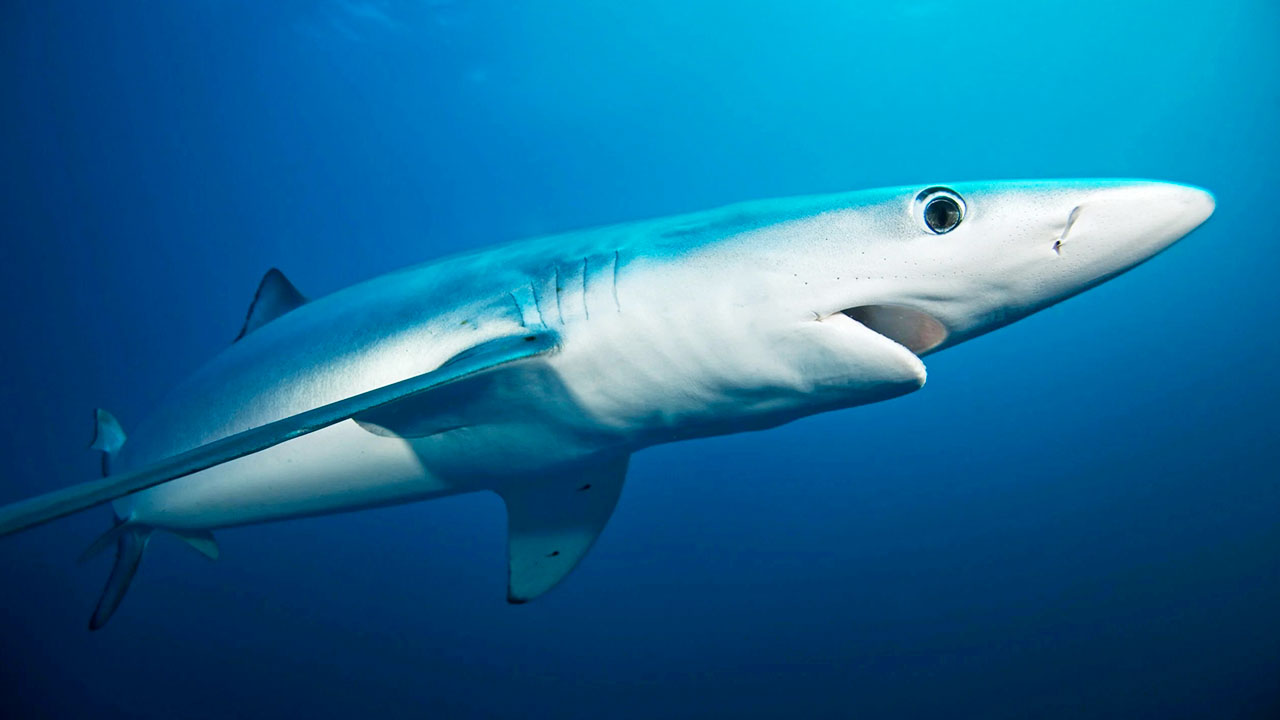
The Blue Shark is a widely distributed open ocean species found worldwide. They can be identified by their stunning blue coloration and extremely long pectoral fins. While Blue Sharks are not considered particularly dangerous compared to other sharks, they have been responsible for some non-fatal attacks on humans. Caution should be used around these large predators.
Oceanic Lifestyle
Blue Sharks live their lives roaming the vast open oceans far from land. They migrate long distances across entire ocean basins in search of food. While attacks near land are rare, dangers exist for divers, snorkelers, and swimmers that venture far offshore into Blue Shark territory. Out in the open ocean, accidents and mistaken identity can lead to confrontation.
Scavenging Behavior
Since they primarily consume dead and dying prey rather than live animals, Blue Sharks frequently gather around fishing boats and aquaculture operations attracted to scraps, discarded guts, bait, and dead catch. Their scavenging brings them in hazardous proximity to boats, equipment, nets, lines, and of course, humans working on the water. Accidental bites are not uncommon in these situations.
Sand Tiger Shark (Carcharias taurus)

Sand Tiger Sharks, also known as Grey Nurse Sharks, Ragged-tooth Sharks, or Spotted Ragged-tooth Sharks, are large, coastal predators found worldwide in temperate and subtropical waters. They are powerful swimmers with a fearsome appearance characterized by pointy snouts and protruding, spike-like teeth. Though attacks are very rare, caution must be taken around these sizable sharks.
Unique Hunting
Sand Tiger Sharks have a unique hunting method – they gulp air at the surface and store it in their stomachs, using it to achieve neutral buoyancy and hover motionless near the seabed or in the midst of prey schools. This Allows them to strike upward at unsuspecting fish with great force and surprise. They typically avoid humans unless provoked or mistaken identity occurs.
Slow Reproduction
Due to viviparous reproduction and mothers only giving birth to two pups every two years, Sand Tiger Shark populations are very vulnerable to overfishing and slow to recover from population declines. They are now internationally protected to prevent extinction. Additional care should be taken to avoid harming these at-risk predators.
Blacktip Shark (Carcharhinus limbatus)
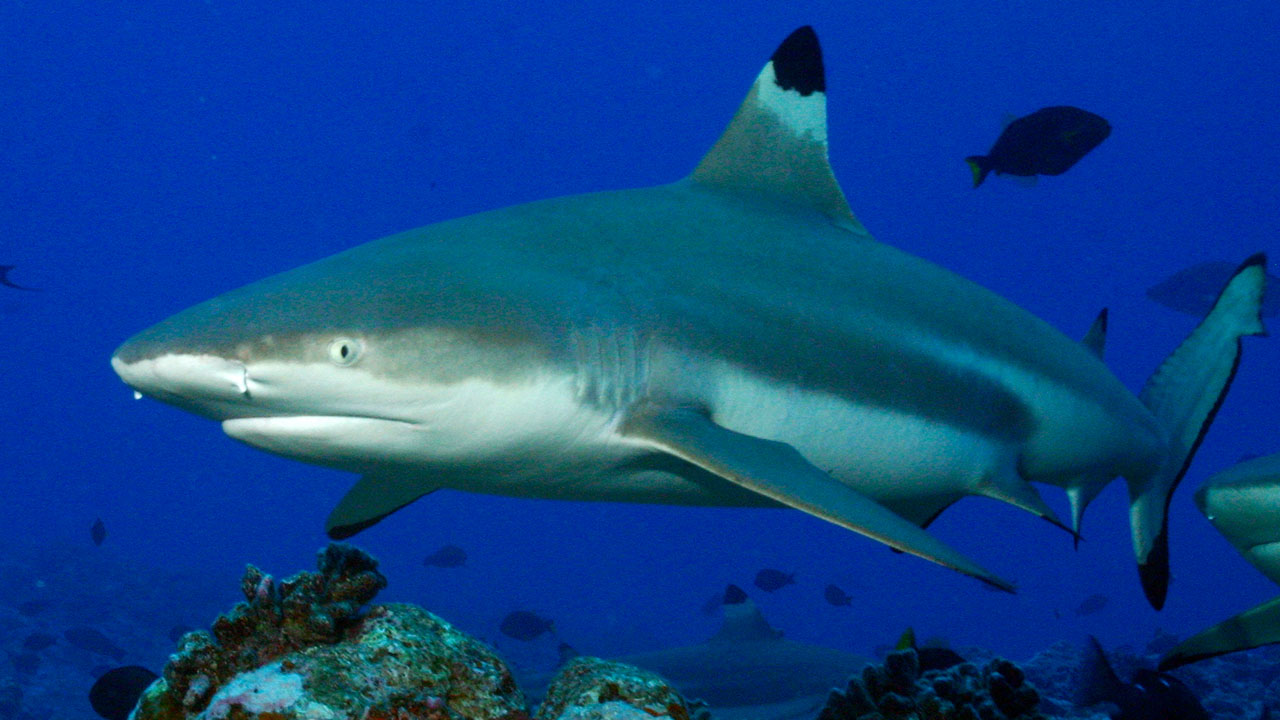
With their distinctive black fin tips and energetic disposition, Blacktip Sharks epitomize the archetypal image of a dangerous shark. They are found worldwide in warm coastal waters and are extremely common in areas popular with humans for recreation. Though not considered an imminent threat to humans, their abundance warrants caution.
High Abundance
Blacktip Sharks have extremely high reproductive rates, with females producing several pups every year. This leads to very high population densities, especially noticeable in shallow regions attractive to humans like beaches, harbors, and reefs. Encounters and incidents, while usually harmless, are frequent due to the sheer number of sharks.
Hunting Behavior
Blacktip Sharks often hunt in packs or large groups, herding and pinning schools of fish against shorelines in a feeding frenzy. This behavior is most intense at dusk when sharks converge near beaches and attack baitfish en masse just feet from shore. Swimmers can inadvertently get in the way of these frenzies. Blacktip Sharks may also become aggressive when competing for hooked fish or bait around fishing piers.
Hammerhead Sharks (Sphyrnidae)
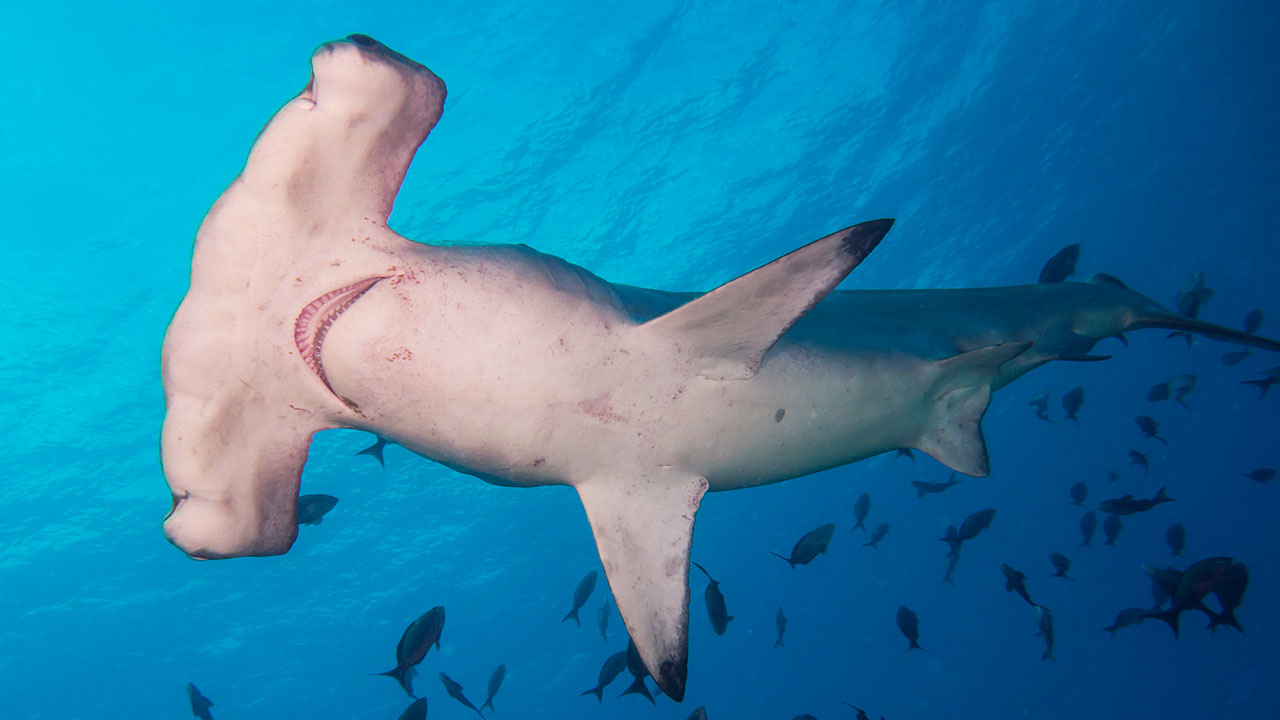
There are nine known species of Hammerhead Shark that range from small to very large in size. They are unmistakable due to their unique flattened, laterally expanded head known as a cephalofoil. While only a few species pose a serious threat to humans, all Hammerheads warrant caution due to their powerful jaws and ability to inflict severe lacerations.
Winghead Shark
The Winghead Shark holds the record for widest hammerhead cephalofoil, spanning nearly 50% of its total body length. Reaching up to 20 feet long, this species poses a significant threat to humans due to its large size and aggressive, unpredictable behavior if encountered underwater.
Great Hammerhead
Considered the most dangerous hammerhead species, Great Hammerheads can reach lengths over 18 feet, weigh up to 1,000 pounds, and inhabit shallow coastal waters favored by humans. They have been responsible for several attacks and exhibit unpredictable aggression towards divers. Extreme care should be taken in their presence.
Conclusion
While shark attacks on humans are rare, sharks possess anatomical features designed for predation and can be potentially dangerous, especially when encountered without warning or in situations perceived as threatening. Caution, respect, and deference to their marine habitat goes a long way in avoiding negative incidents. With greater understanding and preservation efforts, humans can continue to share the ocean safely with these marvels of evolution.



